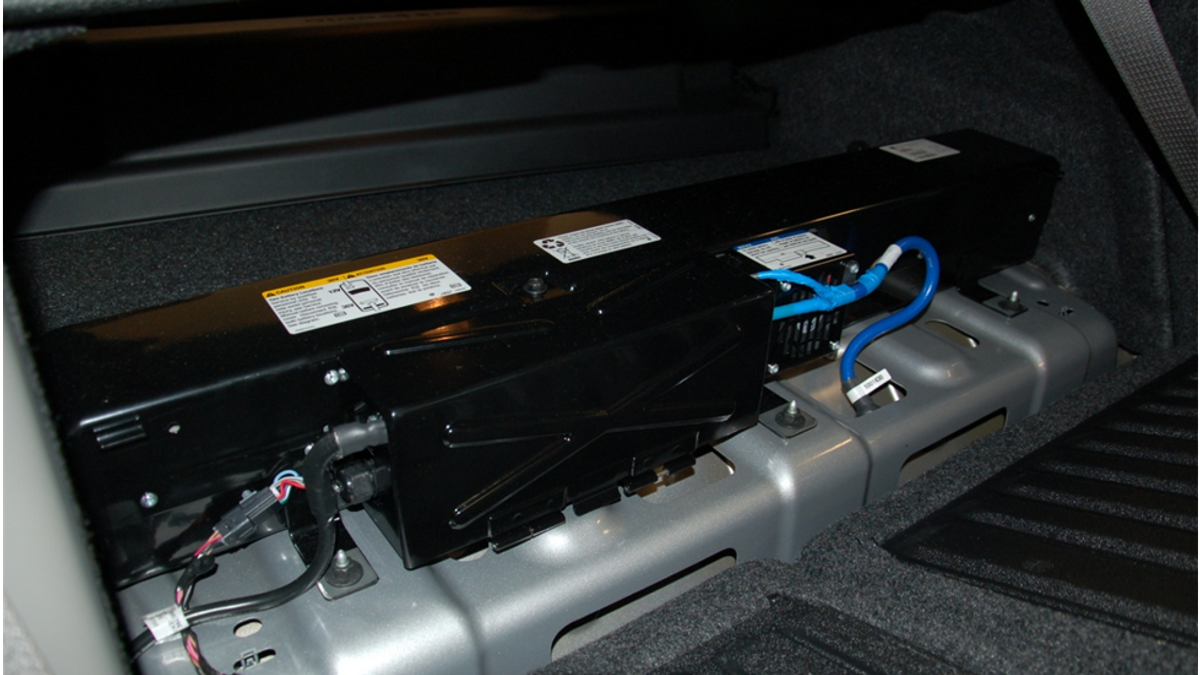
Mid/Low Voltage Automotive Systems
October 19th, 2010
Categories
By Paul Bindon & Matt Stroud
Automotive electrical systems have been evolving quickly, as new technology is integrated in our transportation systems. We have previously discussed high voltage electrical systems in hybrid vehicles. It is also important to understand other electrical systems and how they may be important during extrication. We will be discussing mid voltage “hybrids”, as well as some key 12 Volt systems found in vehicles today.
Mid voltage hybrid vehicles were relatively inexpensive alternatives as compared to the hybrid vehicles from Toyota and Honda. This cost savings was accomplished by using a relatively simple technology that allowed the gasoline engine to shut down when the vehicle was slowing down, and when it was sitting at a stop light. A large electric motor/generator, located between the engine and transmission, was used to restart the engine very quickly when the throttle pedal was applied. When these vehicles are braking or slowing down, the motor/generator is used to recharge the mid voltage battery pack. To be able to power a motor large enough to start the engine quickly, a larger battery capacity was required than a standard 12V system could supply. Mid voltage “hybrids” were equipped with 36-42V battery packs. Early models had three 12V lead-acid batteries that were connected in series to form the required battery voltage. Later models were equipped with newer technology NiMH units. The mid voltage battery was used exclusively for the “hybrid” system, and are not involved in the operation of other vehicle systems such as SRS (airbags).
Mid voltage “hybrid” vehicles use an industry standard color for their wiring. All wires found in mid voltage “hybrids” that contain the 36-42V electricity are colored BLUE. They do not contain a lethal amount of voltage. The blue wire coloring indicates an increased arc hazard. Each mid voltage “hybrid” was also equipped with a conventional 12V battery which powers all other electrical systems in the vehicle.
Below is an example of the mid voltage battery pack and blue wiring which indicates a 36-42 volt system. This battery, from a 2009 Saturn Aura, is located in the trunk of the vehicle.
This is an example of the 12V battery location from the same vehicle. Note the blue wiring in the engine area.
Simple diagrams for battery location can be found under the hood of some mid voltage “hybrids” such as the example below:
The other possible location for the mid voltage battery us under the rear seat (truck), or cargo floor (SUV).
An overview of system components is shown below for the Saturn Aura sedan:
Mid voltage “hybrids” were released from several automotive manufacturers as an attempt to bring to market their own version of eco-friendly vehicles at a time when the public was becoming increasingly aware of their impact on the environment. While they were marketed as “hybrids”, they do not have some of the key characteristics of a true hybrid.
- They Do Not contain a high voltage battery.
- They Do Not contain orange high voltage wires
- They Do Not use a high voltage motor that drives or assists in driving the wheels.
Because of the above listed differences, they are not considered to be true hybrid vehicles by most automotive experts.
The first mid voltage “hybrid” vehicles were the 2004 model year GM Sierra and Chevrolet Silverado full size pickup trucks. Marketed as contractor friendly trucks, they were equipped with an 110V AC power outlet in the truck bed. Advertising featured the truck being used as a power base by a contractor to build a home in a remote location. Unfortunately, the available power from the bed power outlet was limited to the point where high load items such as power saws were unable to be used. Although modest gains in fuel economy and emissions reductions were realized with this technology, production of these trucks was halted after the 2006 model year.
Chevrolet Silverado Mild Hybrid
Later mid voltage “hybrids” offered by GM and its related companies were the 2007 Chevrolet Malibu, Saturn Aura and the Saturn Vue compact sport utility vehicle. These vehicles used the same mid voltage systems to enhance fuel economy and reduce emissions. A cost premium over the conventionally equipped vehicles made them less desirable to the general public and they were discontinued after the 2009 model year.
Cutaway view of a mid voltage hybrid vehicle
As with other hybrid vehicles it is very important to remember that the vehicle is a silent running hazard. Just because the engine is not running, it has the potential to move without warning. It would be embarrassing and potentially dangerous to have to relocate the scene for patient extrication if the vehicle suddenly drives away with one of your team members stabilizing the patient in the vehicle. Normal procedures should be followed for vehicle stabilization before any entry into the vehicle is made.
All computers in vehicles today are run off of the 12 volt system. It is important to remember that disconnecting the 12V battery will prevent the SRS system from operating. This should be a primary goal during vehicle stabilization prior to any extrication procedures being performed.
Mid voltage “hybrid” vehicles have been discontinued from production for a variety of reasons. They are, however, still to be found on the road today in a large enough number to justify being aware of their technology, and how to handle it. Increased arc hazard from the mid voltage system and the ability to move suddenly when the engine was stopped are the main points to remember.